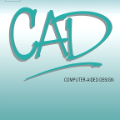Point cloud registration is a key task in many computational fields. Previous correspondence matching based methods require the inputs to have distinctive geometric structures to fit a 3D rigid transformation according to point-wise sparse feature matches. However, the accuracy of transformation heavily relies on the quality of extracted features, which are prone to errors with respect to partiality and noise. In addition, they can not utilize the geometric knowledge of all the overlapping regions. On the other hand, previous global feature based approaches can utilize the entire point cloud for the registration, however they ignore the negative effect of non-overlapping points when aggregating global features. In this paper, we present OMNet, a global feature based iterative network for partial-to-partial point cloud registration. We learn overlapping masks to reject non-overlapping regions, which converts the partial-to-partial registration to the registration of the same shape. Moreover, the previously used data is sampled only once from the CAD models for each object, resulting in the same point clouds for the source and reference. We propose a more practical manner of data generation where a CAD model is sampled twice for the source and reference, avoiding the previously prevalent over-fitting issue. Experimental results show that our method achieves state-of-the-art performance compared to traditional and deep learning based methods. Code is available at https://github.com/megvii-research/OMNet.
翻译:在很多计算字段中, 云层登记是一项关键任务。 以前的通信匹配方法要求输入有独特的几何结构, 以适合三维僵硬变换, 以点到点的零星特性匹配。 但是, 转换的准确性在很大程度上依赖于提取的特性的质量, 这些特性在偏向性和噪音方面容易出错。 此外, 它们不能利用所有重叠区域的几何知识。 另一方面, 以前的基于全球特征的方法可以使用整个点云进行登记, 但是它们忽略了在汇总全球特征时非重叠点的负面效应。 在本文中, 我们介绍了基于全球特征的 OMNet, 一个基于部分到部分点云登记的全球特征的迭代网络。 我们学习重叠的面具, 拒绝不重叠的区域, 因为这些区域会将部分到部分的登记转换成同一形状的登记。 此外, 以前使用的数据只能从每个对象的 CAD 模型中抽取一次, 从而在源和参考的点云中得出相同的云。 我们建议一种更实际的数据生成方式, 即为源和参考的样本采样, 避免以往普遍的软盘/ ASoural- a drography roduction- roduction- roducal lab- lab- lab- slegyal




